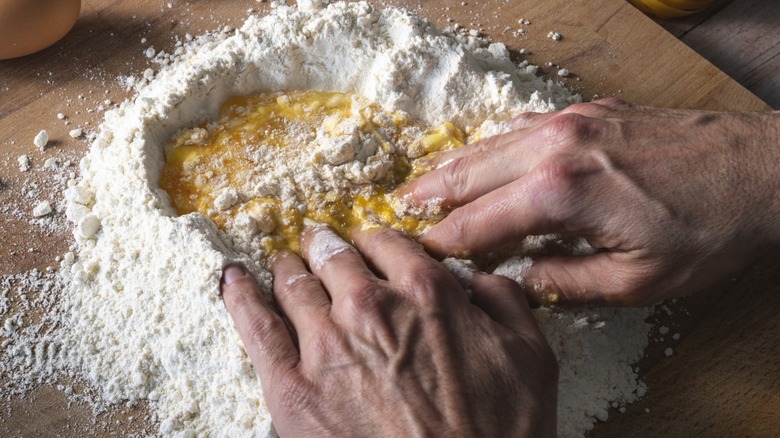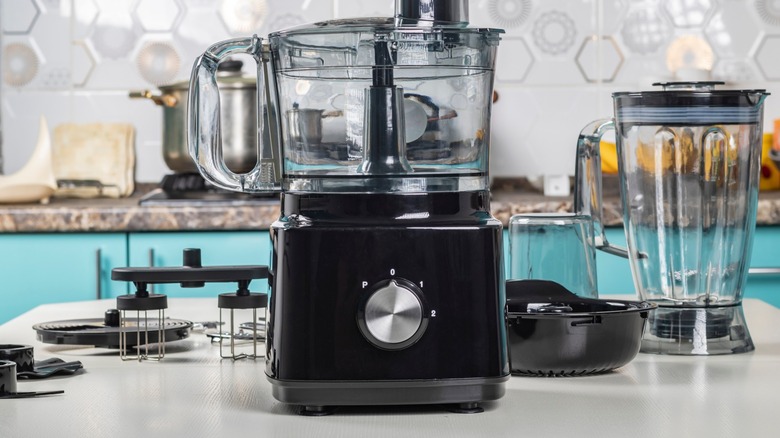How Long You Should Be Kneading Fresh Pasta Dough
Kneading is an essential step for making fresh pasta dough. The process helps gluten develop, resulting in a thick, chewy dough with well-incorporated ingredients. But since it's so critical, it can be pretty intimidating for first-time pasta makers. How long does it take? What happens if you overwork it? And how do you know when you're done? Fortunately, pasta dough is fairly forgiving. While it can dry out if you knead too long, it's not as easy to overwork as standard bread dough. It does take time, though.
Luckily, you don't have to make fresh pasta by hand. In fact, most recipes suggest using a stand mixer because kneading tough pasta dough by hand is a serious workout. You'll know the dough is ready when it forms a smooth, firm ball. It should be springy and elastic to the touch, but not sticky. If you're kneading by hand or using a stand mixer, this will take at least five minutes — though you'll probably want to keep at it for a bit longer.
Your dough will likely be done at around eight minutes if you're using a stand mixer; 10 to 25 if you're kneading by hand. However, the absolute quickest way to knead pasta dough is in a food processor. Kneading pasta dough in a food processor only takes two to three minutes. You'll still have to work the dough for a few more minutes by hand before letting it rest, but you'll cut down on time considerably.
Kneading pasta dough in a food processor
Bread bakers might raise an eyebrow at the idea of kneading dough with a food processor – and rightfully so. Food processors aren't ideal for kneading everything: They're rougher than a stand mixer, making it easy to overwork the dough. But you're not making delicate breads or pastries, here — pasta is a different, tougher beast. It'll be able to handle the rough treatment just fine.
Using a metal blade rather than a plastic dough attachment, pulse the flour, then add the eggs and pulse everything until the dough starts to clump up. Then, assess the dough. If it's crumbly and dry, add water, tablespoon by tablespoon. If it's too wet, add flour. Keep pulsing until the dough forms a ball — it should be done in just a few minutes.
Keep in mind that food processors typically aren't built to knead. Some models will be too small to accommodate the whole recipe, and cheaper choppers might struggle to mix the thick dough. If you don't think your food processor is up for the job, stick to kneading by hand or with a mixer using a dough hook. After all, an unnecessary mess is never efficient.

